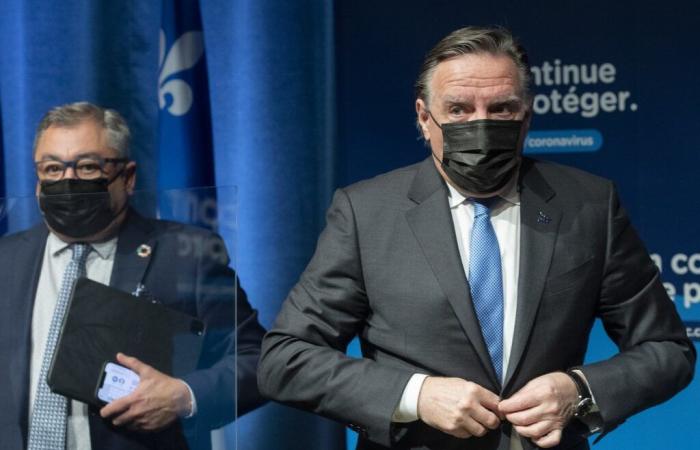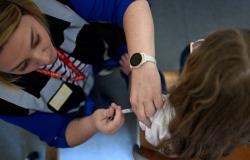MONTREAL — Funding for health promotion and disease prevention has plummeted during the COVID-19 pandemic. In the long term, this could have impacts on the health of the population, warns a CIRANO study. A researcher is also concerned about the loss of public confidence in public health.
Many will remember New Year’s Eve 2022, when Quebec Premier François Legault announced at the last minute the imposition (for a second time) of a curfew. With some exceptions, no one could go out between 10 p.m. and 5 a.m. under penalty of a fine of $1,000 to $6,000. The curfew ended on January 17.
It was later revealed in the media that Quebec public health was unable to justify the use of this measure on a scientific basis. In an opinion, the Montreal Public Health Department even opposed this decision.
“The politicization of public health” during the pandemic and the way it has been used can create distrust in our health system, says Erin Strumpf, co-author of the CIRANO study “Addressing epidemiological crises: yes, but at what cost?”
“If the government ‘uses’ public health as a reason to implement certain policies – we remember the curfew of January 2022 – it was justified at that time by public health which recommended that we do that, but the truth that we discovered several months later is that public health did not recommend this measure,” says Ms. Strumpf.
“As soon as our trust in public health decreases, it’s going to be more difficult [d’amener] “People are getting tested and engaging in chronic disease prevention measures,” the researcher says. She believes the reputation of public health has been greatly weakened.
According to Ms. Strumpf, to “catch up” with distrustful people, it would be relevant to understand who they are and what their perspective on public health is.
Overall, public health’s management of the pandemic has been a success, says Strumpf, who does not deny the very significant challenges that have arisen. “If we face a new crisis, another pandemic, we must be able to demonstrate successes in the constructive role that public health can play,” says Strumpf.
Prevention and promotion undermined
In the pre-pandemic years, prevention spending was the second largest item, behind health promotion spending, the CIRANO study indicates. In 2020-2021, it was supplanted by spending on monitoring health emergencies and risks as well as credits paid to community organizations.
“Reducing spending on prevention and health promotion may have had deleterious effects on the health of populations,” the study states. In particular, there are fears of an increase in chronic diseases that were not detected early, which could also create additional pressure on the curative system.
If it had to do it all over again, could the government have benefited from investing in prevention and health promotion? Not from a monetary point of view, according to Ms. Strumpf. “Prevention is very rare that it will save us money in the future. But prevention, effective management of chronic diseases and health promotion, can produce health for the population in a more effective way than care.” In other words, it can save lives, but not save public funds.
Spending on monitoring health emergencies and risks for 2020-2021 represents an increase of almost $7.80 per capita compared to the average value predicted without the pandemic, a relative difference of more than 3000%.
This type of additional spending has come at the expense of investments in continuous monitoring of population health, health promotion and disease prevention.
Spending on health promotion was $2 per capita lower, a 16% difference compared to a non-pandemic scenario. Spending on disease prevention was about $2.30 per capita lower, a 30% difference.
The study also notes variations in the amounts invested depending on the socio-health regions.
“We have to remember that we were in a health crisis, so it’s not that unexpected that there would be a shift or substitution of funding,” said Strumpf, who is also a full professor in the Department of Economics and the Department of Epidemiology, Biostatistics and Occupational Health at McGill University.
The adverse effects on the health of the population will depend mainly on the duration of the reduction in the amounts allocated. “We cannot currently see whether the reduction in funding for health promotion and prevention has continued to decline in the years well after the pandemic. We only have the two [premières années] of the pandemic,” Strumpf said.
She said there have been challenges accessing data and she hopes that with this database it will be easier to obtain them for the coming years. The CIRANO study used several sources of population health and socioeconomic data including the Canadian Community Health Survey and other demographic data from Canada and Quebec.
Ms. Strumpf also adds an important nuance. “When we talk about cancer screening or other preventive measures, they have decreased for several reasons, it’s not just the decrease in funding. Clinics were closed, people were unable or unwilling to leave their homes. Everything was turned upside down,” she says.
She is seeking to know whether this funding will be increased to avoid the anticipated consequences. For the moment, this question remains unanswered.
—
The Canadian Press’ health content is funded through a partnership with the Canadian Medical Association. Editorial choices are solely the responsibility of The Canadian Press.






